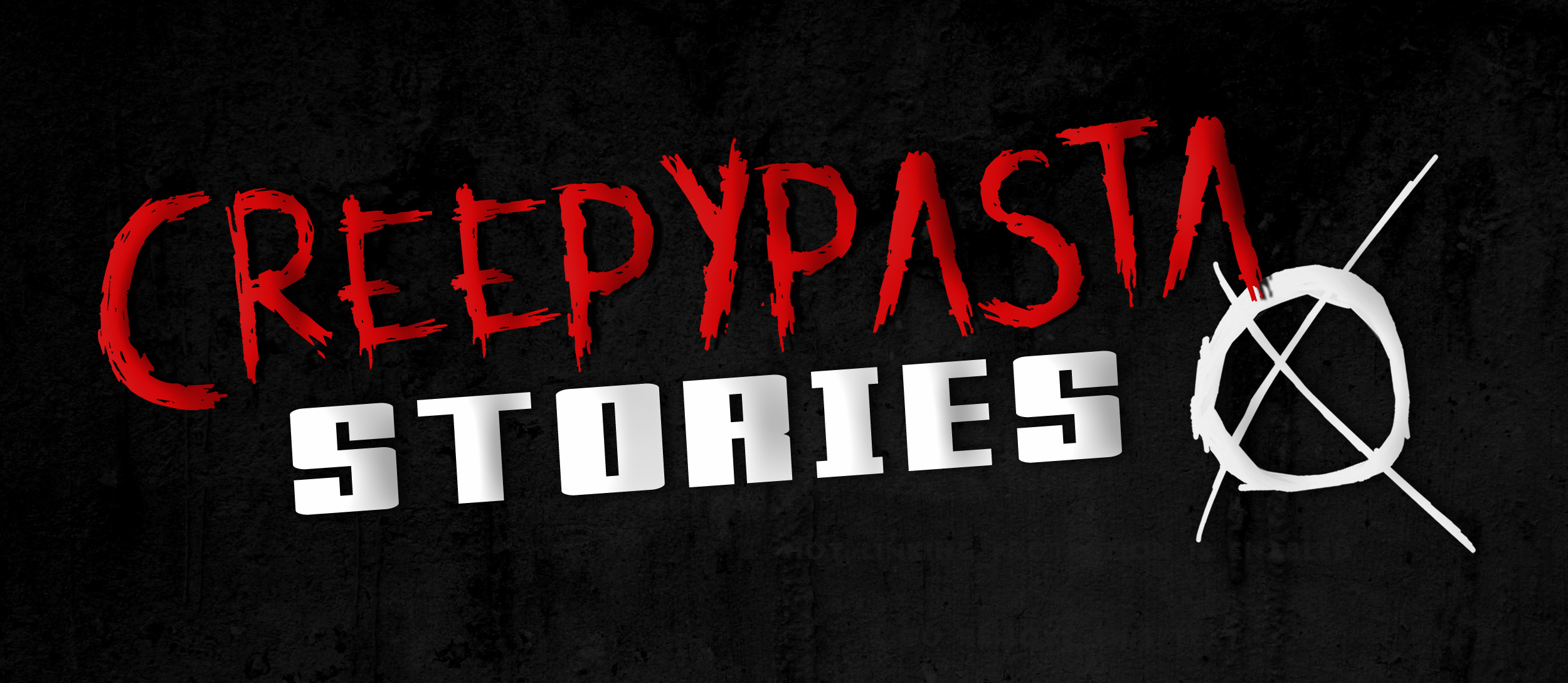
17 Dec The Last Voyage of the Rouse Simmons and Its Aftermath
“The Last Voyage of the Rouse Simmons and Its Aftermath”
Written by Kyle Harrison Edited by Craig Groshek and Seth Paul Thumbnail Art by Craig Groshek Narrated by N/ACopyright Statement: Unless explicitly stated, all stories published on CreepypastaStories.com are the property of (and under copyright to) their respective authors, and may not be narrated or performed, adapted to film, television or audio mediums, republished in a print or electronic book, reposted on any other website, blog, or online platform, or otherwise monetized without the express written consent of its author(s).
🎧 Available Audio Adaptations: None Available
⏰ ESTIMATED READING TIME — 13 minutes
In the late 1800s, set against the raw beauty of Lake Michigan, if you looked across the water, you would often see a dazzling spectacle.
Sleek, three-masted schooners were running smoothly on a western wind day in and day out before the days of motor vehicles. Almost two thousand of these prized vessels reliably brought goods for a large portion of the Midwest.
However, those placid waters could have a dark side. Often in late autumn, the winds would pick up, and the lakes would become death traps for sailors. Prayers would be offered up every time a new voyage went out, but they often went unanswered.
Some say that the Great Lakes were the most treacherous during late November, and perhaps none could testify to that more so than the Rouse Simmons.
The Rouse Simmons was built in Milwaukee in 1868 by Allan, McClelland & Company and named after a Kenosha businessman.
After construction, The schooner was soon purchased by a wealthy lumber magnate; Charles H. Hackley of Muskegon, Michigan, became just another cog in his large fleet. Hackley’s ships served across most of Lake Michigan’s coastline. The Rouse Simmons was no exception, soon transforming into a workhorse and shipping lumber from company mills to several ports around the lake for around 20 years. The schooner was making weekly runs between Grand Haven and Chicago at its peak.
It was the pinnacle of what was considered a large capacity ship for shallow waters at the time, often tackling over 53 tons of lumber at a time to the insatiable demand of Chicago’s growing industry.
And no greater need was there than at Christmastime…
Shrewd businessman Herman Schuenemann eventually used the ship for his new venture in trading fine fir trees that had been cut in the northern parts of Ontario. Often he would tout that his prices were lower than any competitors, and he would even give some of the trees to families that couldn’t afford them.
Some became affectionately endeared to the sailor and even would call him Captain Santa for his larger-than-life persona during the winter months.
He could be seen taking to the helm himself to ensure that the haul made it to Chicago in time for the holiday. He was a remarkable individual and one that history will remember, but not for all of the reasons you may think.
* * * * * *
You see, this whole thing started before Herman really had any skin in the game.
By the late 19th and early 20th centuries, the popular German tradition of decorating an evergreen tree was widely practiced, and demand for Christmas trees was great. It was not uncommon for a handful of lake schooners to make late-season runs from northern Michigan and Wisconsin—before the worst storms and ice made lake travel too hazardous—loaded with thousands of Christmas trees for busy Chicago waterfront markets.
The number of Christmas schooners varies, but perhaps up to two dozen vessels in any season delivered evergreens to markets in Great Lakes states. Herman saw an opportunity and continued to ship trees even during the worst storms.
Most vessels, including the Rouse Simmons, sold the trees directly from their berths along the Chicago River’s Clark Street docks in Chicago. Electric lights would be strung from the schooner’s bow to stern, and customers were invited to board the ship to choose their trees.
In addition to selling Christmas trees, many boat operators, including Schuenemann, made and sold wreaths, garlands, and other holiday decorations. Barbara Schuenemann and her three daughters helped make and sell these items as part of the family’s holiday trade. Truthfully, you couldn’t find a more Christian family than theirs in that day and age.
Although when Captain Santa would face those dangerous waters against the warnings of family and friends, one might wonder whether he was truly honoring the Blood of Christ and celebrating his birth.
The first tragedy hit in 1898.
On November 9th of that year, death marred the Schuenemann’s holiday season when, just one month after the birth of twins Hazel and Pearl, Herman’s older brother August Schuenemann died while sailing a load of Christmas trees to Chicago aboard the schooner S. Thal.
The 52-ton, two-masted schooner, built in Milwaukee in 1867, broke up after it was caught in a storm near Glencoe, Illinois. There were likely dozens of men on board.
There were no survivors.
The Schuenemann family was devastated, but Herman continued the family tradition of making late-season Christmas tree runs.
A decision that would soon make fate run its course for him.
Curiously, August had only obtained the ship weeks before the accident, purchasing it in an auction. Some suggested that perhaps he did not understand how to properly sail the massive boat as it had been quite some time since he had been a captain.
The same was not true of Herman. Even after his brother died, he stayed true to the seas for three decades. Even after filing for bankruptcy, he refused to give up his life’s calling. The seas would call to him.
It would be easy to scoff at the superstitions held by sailors, easy to raise one’s eyebrows in amusement when hearing of the omens sailors was convinced would determine their fate while sailing on the open waters, to pass each off with a laugh.
Superstitions were not passed off lightly but were deeply held beliefs. During a tumultuous storm, the men who devoted their lives to the ship grasped with white-knuckled hands as their boat was tossed like a bathtub toy. They were a matter of life and death.
The blink of an eye or waiting for a moment too long could mean the end of your life. For sailors of the Great Lakes, these superstitions were handed down from generation to generation, passed along by “old salts” who could read the world around them like a book, who could hear its voice, silent to most, but not to all. Taking note of the happenings on and around a ship was nearly a religious practice. Everything was watched with a trained and careful eye – the sky, the wind, the waves.
Many claimed that Captain Santa had heard many omens that this would be his last voyage. He was not a superstitious man, though, instead choosing to let the waves choose his fate.
He was not the only one either that had these ill tidings.
Alvida, the daughter of Captain Charles Nelson, who was the partner to Hermann, told the Record-Herald that her father had a premonition the night before they sailed that something terrible was going to happen. She pleaded with her father not to sail with Schuenemann on that Friday, but Nelson said he had given Schuenemann his word and could not back out.
Captain Charles had been a lake captain for 50 years and did try to persuade Herman to delay, but he could not convince him. Herman didn’t want to risk being iced into the harbor and having his ship dashed against the docks by gale-force winds.
Alvida would never see her father alive again.
Both men had promised their wives this would be their last run across the lakes. Perhaps it was a foretelling of what was to come.
Interviews were made of some of the residents of Thompson, Michigan, near where the Rouse Simmons had docked before making its return trip to Chicago. The residents said they loved Captain Schuenemann, and the feeling was mutual; often, these were the families he would pass out gifts to as he was getting ready to leave. In fact, one of his last acts before setting sail for Chicago was to give away candy to the town’s children. He normally would have wrapped presents for them, but he admitted this was all he could afford with finances being so tight.
Some took this as yet another sign that his voyage should be canceled.
Several residents claimed that they pleaded with Schuenemann not to set sail and wait out the storm. Still, according to those interviews made for a 1975 Milwaukee television documentary, Schuenemann stated that the people in Chicago have to have their trees for Christmas.
He supposedly said this as he was watching rats deserting his ship.
The significance of that would be great if Captain Santa knew what the omens meant.
Some consider rats to be the wisest of mariners.
Rodents will often avoid water at all costs.
They can scurry around in areas largely unseen and inaccessible to humans.
“You never know what they noticed about the ship…that is probably why when rats leave ships in a hurry. You know it is considered a bad omen and in the sea-faring circles one of the worst possible omens,” Amos Tacern said in his interview.
The mood on the docks was tense and foreboding. Tempers flared. Many were worried because they were leaving on a Friday.
According to The Ocean Almanac by Robert Henrickson, the British Navy tried to dispel the Friday superstition in the 1800s. They intentionally laid the keel of a new ship on a Friday, launched it on a Friday, set it to sail on a Friday, and then went so far as to name the ship Friday. What happened next came as little surprise to most. Neither the ship nor her crew was ever heard from again. They vanished into thin air.
At least two sailors refused to sail back on the Rouse Simmons due to both the impending storms, the Friday schedule, and the fact that the rats were leaving in droves.
This was very serious since the sailors were not paid if they did not complete the voyage. In short, they were returning to their families with nothing.
The two sailors (some accounts mention three sailors, but the exact number is unknown) were Hogan Hoganson and “Big Bill Sullivan,” whose real name was William F. Tietz.
The Chicago Inter-Ocean interviewed Hogan Hoganson in 1967, and he testified that he witnessed the rats leaving the ship, and when the younger sailors saw that he was going back by train, they laughed at him.
“They didn’t laugh for long after that,” Hogan proclaimed.
Perhaps an even stronger portent of its fate was related to the number thirteen.
Of course, it is not merely sailors that say this number is dangerous, often citing that it connects to Judas Iscariot, who betrayed Christ.
Many sailors have refused to sail when there are only thirteen men aboard. According to some reports, there were only many souls aboard when the ship departed for Chicago.
On Friday, November 22nd, 1912, the Rouse Simmons, heavily laden with nearly five thousand Christmas trees filling its cargo hold and covering its deck, left the dock at Thompson, Michigan.
Some eyewitnesses to its departure claimed the ship looked like a floating forest. It was startling to see it move across the water like an island alive.
However, Schuenemann’s choice to go coincided with the beginnings of a tremendous winter storm on the lake that sent several other ships to the bottom, including the South Shore, Three Sisters, and Two Brothers.
These ships had all been captained by veterans and yet now found themselves at the bottom of the lakes. This did not deter Herman, though, and he kept going forward despite the clear signs of danger.
The temperature immediately dropped from 40 degrees to below freezing. Rain turned to snow and ice, which coated the ships’ rigging, sails and spars – and the Christmas trees on the deck.
What happened next is a mystery, but it was something seriously unexpected. Something deadly.
In their final minutes, the Rouse Simmons had thrown out the schooner’s port anchor into Lake Michigan, hoping to hold her into the wind, archeologists later discovered. Yet nothing could stop Mother Nature from unleashing its fury.
Last seen by the Kewaunee Life-Saving Station, the Rouse Simmons was flying a distress flag five miles offshore while being driven southward by a northwest gale. With no chance of catching the fleeing vessel, the Kewaunee station’s captain telephoned the Two Rivers’ Life-Saving Station, 25 miles to the south.
The station immediately launched a lifeboat to intercept the distressed vessel and bring her crew to safety. However, when the lifeboat motored onto the lake, the Rouse Simmons had vanished. In studying historical documents, it was discovered that the vessel was lost under clear conditions, contrary to the popular story that materialized around the Simmons’ loss. By recreating the search pattern of the Two Rivers lifeboat and comparing it with the Rouse Simmons’ location today, the WHS deduced that the Two Rivers lifeboat completely encircled the Rouse Simmons and was never more than a few miles from where she lay at the bottom of the lake. She was not, as legend has it, last seen by the life-saving crew encrusted with ice through a fleeting window in a vicious snowstorm.
With a reported six miles of visibility that day, if the ship were still afloat as the lifeboat rounded Two Rivers Point at 4:20 p.m., the life-saving crew would have seen her. Additionally, the snowstorm that many lake captains reported as “the worst they had ever seen” may well have been terrible, but it began around 5 p.m.—well after the Rouse Simmons would have been on the bottom.
In the days following her disappearance, clues were slow to come. Christmas trees believed to be from the wreck washed up along the shores of Michigan and Wisconsin that December and were brought up in fishing nets for years to come.
Further evidence was made to prove that their luck had run out when the wreck was discovered.
A horseshoe nailed to the craft with its open end pointing up to “hold the luck in” is one particular item found.
If it is upside down or in an inverted “U” position, it means the ship’s luck is “running out.”
Expert scuba diver Gordon Kent Bellrichard, in October 1971, claimed to find the horseshoe hanging upside down by a single nail.
Of course, it is unclear if the horseshoe was in this position before the ship sank or if it gradually settled in this position after being submerged in 172 feet of water for nearly sixty years. Either way, it did seem as though the aging ship’s luck had definitely “run out.” Not a soul made it off the ship.
On December 6th, 1912 (13 days after the last sighting of the Rouse Simmons), the Milwaukee Sentinel reported that a Capt. William Baxter of the Kearsarge heard some vessel sounding its bell just before sighting the vessel. Many sailors believe those to be what is known as Phantom Bells.
The Ship’s Bell was used to indicate a particular time or rung a certain number of times for a particular tradition.
For example, on New Year’s, some sailors would ring the bell sixteen times to symbolize they were ringing in the new and disposing of all the old from the year before.
When a sailor died, often, they would ring eight bells to represent the end of the watch.
Baxter said he heard no more than six, inferring that when it echoed, it reminded him of the mark of the Wild Beast from the Revelation to John.
“It looked nothing like it had only a few weeks ago; instead, the masts were ripped and torn. One was completely split in two. It was moving at a speed not possible for a ship so large. Often these vessels are moving at a steady pace, pushing aside the waves slowly to reach their destination. But this night was different. I saw it race across the horizon. Almost like a fire spreading over the lake.”
Baxter refused to speak any further of the incident. It made his entire body shake to its core.
Even long after the wreck – for decades, the ship would be seen.
Usually, after a storm strong enough to stir up the lake bottom, trees would be seen on the shores.
In the early years, the trees would show up as fresh as the day they were cut due to being preserved by the frigid Lake Michigan waters. Some claimed it was as though the angels themselves had protected the trees.
People would gather them up and decorate them for Christmas, saying a prayer of thanks to the ghostly captain they thought delivered them. The trees would turn up as skeletons in much later years, not a fir left on their branches.
But even then, the trees would be cut into thin slices, which would be decorated as ornaments. It has often been said that Captain Santa is still delivering his load of Christmas trees, even in death.
But not all stories are pleasant ones.
An anonymous sailor recounted a story that he had heard from his great uncle.
This great uncle was born in 1909, just three years before the Rouse Simmons was lost.
He grew up near the area and would go down to the Point Beach Lighthouse to pick chokecherries from the trees.
He told this nephew that people would go down to the Lakeshore usually on Christmas Eve or Christmas morning just before dawn to try to catch a glimpse of a ghost ship during the 1930s.
It was described as an old ship with tattered sails that would bob in the waves. Others said that it was only the bones of the ship, hardly kept together at all except by the sheer spirit of the crew.
Someone would see the ship, and it would just disappear in a moment, but other times he said that many people would claim to see a person waving a lighted lantern back and forth on deck.
One resident had this to say:
“Tied to the deck by the Christmas lights that had once been used to decorate the vessel, now it was proving to be the final chains for the Captain that had devoted his life to the sea.”
“It used to come along in a fog, and when it was abreast of the coast, the breeze would die out. A chill would come over the water, and the vessel passing would shiver as its salts hung idle. The specter crew stood at the guns, and the foghorn was moaning. They would sometimes be said to be singing Christmas hymns.”
He cleared his throat before citing what he remembered of the song.
“Be near me, Lord Jesus,
I ask Thee to stay,
Close by me forever,
and love me, I pray!
Bless all the dear children
in Thy tender care
And take us to heaven,
to Live with Thee there.”
And from the masthead flew the signal, ‘Cannot rest until avenged.’
“I will never forget the life drained from his eyes, the sheer anger and frustration and pain that the bones held as they sailed across the lake. Doomed to continue to deliver those trees for all eternity because he failed to listen to the warnings given.”
Barbara Schuenemann passed away in 1933 and was buried at Acacia Cemetery on Irving Park Road in Chicago.
Hermann is listed on her stone, but his body was never discovered. The only item to ever be recovered was a tattered old wallet. Coincidentally the small harbor ship that found the wallet was called Reindeer, perhaps another omen connected to the horrible holiday season.
Two of their daughters, Elsie Roberts and Hazel Groneman, are buried in the plot, although their graves are unmarked because of the bankruptcy that struck the family after Herman’s death.
Barbara did try to continue the tradition of delivering trees even after her husband’s death, but the massive storm caused a change in attitude toward sailing during that time of year. Because of this, Barbara died perhaps poorer than the needy families she often gave trees to in memory of her husband.
The Schuenemann stone has a single evergreen tree in the center, and people claim that they can sometimes smell freshly cut Christmas Trees when visiting the gravesite. If you have the opportunity to visit the site and walk toward it, you will likely catch the smell of freshly cut evergreen.
Even when it is not holiday time, your heart will likely jump a little just by the unnatural smell.
Some have also said they found a blanket of evergreen branches laid upwind on top of a grave that was about 30 feet away and was able to trace the smell to that gravesite.
No one knows where they come from, or even if they are of this world.
The Rouse Simmons wreck was discovered in 1971, as mentioned before. They found that there were still needleless, skeleton-like trees in the cargo hold.
The same ones that some have said are found on the grave.
And the year that it disappeared, newspapers ran with the headline that this would be a year without Christmas.
Later, a note was found from the first mate of the Rouse Simmons: “These lines written at 10:30 p.m. Schooner R.S. ready to go down about 20 miles southwest of Two Rivers Point between 15-20 miles offshore. All hands lashed to one line. Goodbye. Nelson.”
Perhaps the darkest message was found in a bottle from the Rouse Simmons washed onto the shore at Sheboygan, Wisconsin, sometime after its sinking. It had been corked using a small piece of the cut pine tree.
How long it had bobbed along in the waters is unknown.
The message read: “Friday…everybody goodbye. I guess we are all through. During the night, the small boat washed overboard. Leaking bad. Invalid and Steve lost too. God help us.”
But God did not listen.
🎧 Available Audio Adaptations: None Available
Written by Kyle Harrison Edited by Craig Groshek and Seth Paul Thumbnail Art by Craig Groshek Narrated by N/A🔔 More stories from author: Kyle Harrison
Publisher's Notes: N/A Author's Notes: N/AMore Stories from Author Kyle Harrison:
Related Stories:
You Might Also Enjoy:
Recommended Reading:
Copyright Statement: Unless explicitly stated, all stories published on CreepypastaStories.com are the property of (and under copyright to) their respective authors, and may not be narrated or performed, adapted to film, television or audio mediums, republished in a print or electronic book, reposted on any other website, blog, or online platform, or otherwise monetized without the express written consent of its author(s).









